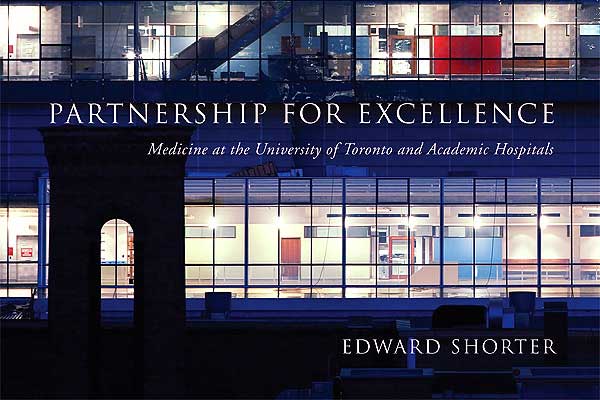
How U of T Medicine became a global leader
Published: October 30, 2013
The history of the University of Toronto’s medical school has been captured for the first time, in a book that tells the story of the Faculty of Medicine, from its start as a small school for training local doctors to an international force in health research and education.
The book — Partnership for Excellence: Medicine at the University of Toronto and Academic Hospitals — details the context, people and decisions that led to discoveries such as insulin and stem cells and the Faculty’s role as one of the world’s top schools for health professionals.
“The story of our Faculty is an extraordinary one, replete with narrative about incredibly dedicated individuals of enormous talent, inspired innovations and pivotal turning points,” says Catharine Whiteside, dean of the Faculty. “This work of scholarship documents our history with passion, precision and great insight.”
Historian Edward Shorter, who wrote the book, is the Hannah Professor of the History of Medicine at U of T. He has written about such subjects as psychosomatic illness, psychiatry and the doctor-patient relationship since he came to Toronto from Harvard in 1967.
“This was a tremendous untold story,” says Shorter. He felt compelled to tell the story after learning that many of his medical students didn’t know that U of T researchers discovered stem cells, he says.
“It’s important for future generations of students to know they are present in one of the world’s great faculties of medicine.”
The Faculty owes much of its success to an unusual convergence of historical factors, Shorter writes. From the earliest days, young Canadian clinicians and investigators pursued postgraduate study in Great Britain. Many figures from medical schools in Edinburgh and London came here, too. And when the Faculty adopted the research-intensive model used in many U.S. medical schools, visionary Faculty leaders secured the infrastructure and funding for world-class research.
“We were doubly favoured,” says Shorter. "British science and U.S.-style resources enabled U of T to ascend to a position of international prominence in medicine.”
The book was four years in the making. The story is long, spanning more than 150 years, but Shorter says the biggest challenge was piecing it together, because many of the University’s academic departments had discarded their departmental papers. “One take-away from the project is that staff should preserve historical records through U of T Archives."
Partnership for Excellence is published by U of T Press. The University will host a launch for the book on November 4 at 5:30 p.m., in the atrium of U of T’s Donnelly Centre for Cellular and Biomolecular Research, where Professor Shorter will answer questions and sign copies of the book. This event is open to the public. Those planning to attend should R.S.V.P., and can submit questions in advance by tweeting them to @UofTMedicine.
Jim Oldfield is a writer with the Faculty of Medicine at the University of Toronto.



